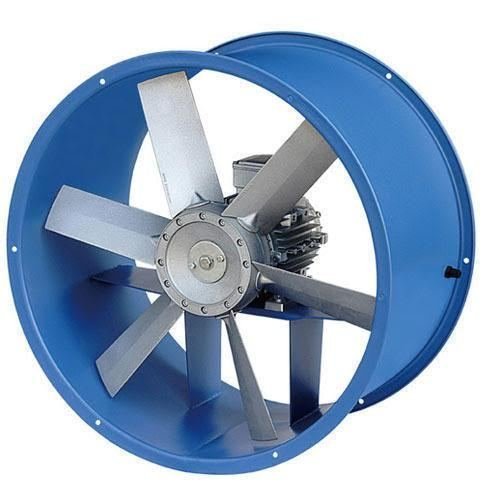Axial Flow Fans: An In-Depth Exploration
Understanding Axial Flow Fans
Axial flow fans are a type of fan commonly used in a variety of applications where the primary requirement is to move a large volume of air. These fans are named for their ability to force air to move parallel to the shaft about which the blades rotate. The design and functionality of axial flow fans make them particularly suitable for industries and applications where space and efficiency are crucial.
Key Components and Working Principle
- Blades: Axial fans have blades that rotate around an axis, drawing air in parallel to that axis and expelling it in the same directional flow.
- Shaft: The shaft connects to the motor, and it is responsible for the rotational movement of the blades.
- Motor: Motors are the driving force behind the fan’s blades. They can be AC or DC, depending on the application.
The operation of an axial flow fan is relatively straightforward. The motor rotates the blades around the shaft, which moves air axially, from the entry point of the fan to its exit. The efficiency of these fans is influenced by the design of the blades, including their number, shape, and angle.
Applications of Axial Flow Fans
Axial flow fans are versatile and used in various sectors including industrial, commercial, and residential settings. Some common applications include:
- Ventilation Systems: They are used in HVAC systems to circulate air throughout buildings and structures.
- Cooling Towers: These fans are essential in cooling towers to dissipate heat by ensuring a steady air flow.
- Exhaust Systems: Axial fans are often used in exhaust systems to remove contaminated air from a space.
- Agricultural Facilities: They help in ventilating barns and other agricultural facilities to maintain a healthy environment for livestock.
Advantages of Axial Flow Fans
- Energy Efficiency: These fans require less power to operate compared to other types of fans, making them energy-efficient.
- Cost-Effective: Generally, axial flow fans are less expensive to manufacture and maintain.
- Space-Saving Design: Their design is compact, which makes them ideal for use in tight spaces.
- Versatility: They can be used in a variety of settings, from industrial to residential.
Disadvantages of Axial Flow Fans
- Limited Pressure Capability: Axial fans are not suitable for applications requiring high pressure, as they are less effective in these scenarios.
- Noise Levels: Depending on the design, axial flow fans can be noisier than other types of fans.
Rohhit Enterprises and Their Expertise in Axial Flow Fans
Rohhit Enterprises has established itself as a reputable provider of high-quality axial flow fans. Their products are designed with precision and built to ensure longevity and reliability. Rohhit Enterprises offers a range of axial flow fans that are tailored to meet diverse industrial needs, ensuring that they provide efficient and effective solutions for air movement and ventilation requirements.
Frequently Asked Questions (FAQs)
- What is the main difference between axial and centrifugal fans?
Axial fans move air parallel to the shaft, whereas centrifugal fans move air perpendicular to the shaft.
- Can axial flow fans be used for both intake and exhaust purposes?
Yes, axial flow fans can be configured to serve both as intake and exhaust fans depending on the setup.
- Are axial flow fans suitable for residential use?
Yes, they are suitable for residential use, particularly in systems like attic ventilators and bathroom exhausts.
- How do I choose the right axial flow fan for my application?
Consider the volume of air you need to move, the space available, and any specific environmental conditions like temperature and humidity.
- What maintenance is required for axial flow fans?
Regular maintenance includes cleaning the fan blades, checking the motor, and ensuring that all components are securely fastened.


